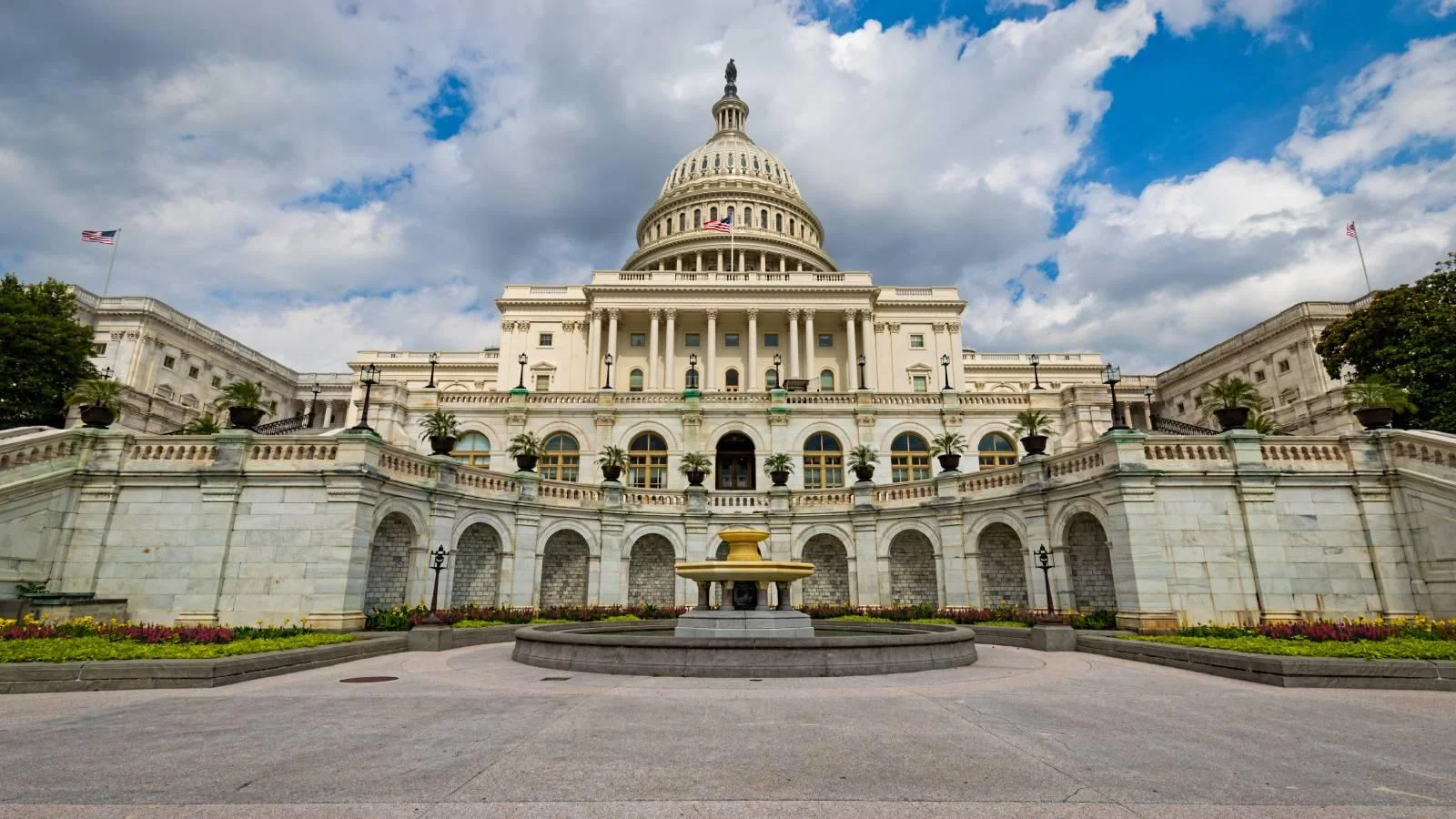The Congressional Record is a unique source of public documentation. It started in 1873, documenting nearly all the major and minor policies being discussed and debated.
“PETITIONS AND MEMORIALS” mentioning the U.S. Dept. of Transportation was published in the Senate section on pages S1583-S1584 on March 12, 2014.
The publication is reproduced in full below:
PETITIONS AND MEMORIALS
The following petition or memorial was laid before the Senate and was referred or ordered to lie on the table as indicated:
POM-203. A resolution adopted by the House of Representatives of the State of Michigan urging complete hydrologic separation of the Great Lakes and Mississippi River basins, calling for the formation of a regional body to negotiate terms of hydrologic separation, and urging Congress and other entities to take interim steps to prevent Asian carp movement into the Great Lakes; to the Committee on Environment and Public Works.
House Resolution No. 305
Whereas, The Great Lakes constitute one of the world's greatest inland waterway systems. Recreational opportunities on the lakes make Michigan and the region an attractive place for businesses to locate. The Great Lakes support jobs across a spectrum of industries that include manufacturing, tourism, recreation, shipping--including freight transport and warehousing--agriculture, science, engineering, utilities, and mining. The protection of the Great Lakes is essential to local and national economic growth; and
Whereas, The Great Lakes are central to Michigan's state identity and economy with a $15 billion annual tourism industry and more than 1 million licensed anglers contributing $2 billion to the economy; and
Whereas, Aquatic invasive species (AIS) are one of the foremost challenges facing the Great Lakes. Economic and environmental damage from invasive species in the Great Lakes basin is estimated at $5.7 billion per year, and commercial and sport fishing in the Great Lakes basin have suffered losses estimated at $4.5 billion; and
Whereas, Asian carp pose an imminent threat to the Great Lakes ecosystem and economy. The leading front of the Asian carp population has been confirmed 25 miles downstream of the electric barriers located on the Chicago Sanitary and Ship Canal, and monitoring has detected Asian carp DNA between the electric barriers and Lake Michigan. Research by U.S. and Canadian fishery experts shows that there is a significant risk of Asian carp surviving, spreading, and establishing populations in the Great Lakes, particularly in shallow, near-shore areas like Green Bay, Saginaw Bay, Lake St. Clair, and Western Lake Erie. Once established, they can reproduce rapidly, consume large quantities of food, disrupt local ecosystems, out-compete native fish species, and devastate recreational fishing and boating opportunities. If populations of Asian carp become established in the Great Lakes, they will be difficult, if not impossible, to control or eradicate, and thus, the federal government has recognized Asian carp as ``the most acute [aquatic invasive species] threat facing the Great Lakes today''; and
Whereas, A recent study conducted by the U.S. Army Corps of Engineers and the U.S. Fish and Wildlife Service showed that the electric barriers in the Chicago Sanitary and Ship Canal, designed to prevent the spread of Asian carp and other invasive fish, are not effective in stopping the movement of all fish, especially small fish, and that barges can sweep fish through the electric barrier; and
Whereas, The Restoring the Natural Divide report prepared by the Great Lakes Commission and the Great Lakes and St. Lawrence Cities Initiative in 2012 presented three alternatives for hydrologically separating the Great Lakes and Mississippi River basins. The report demonstrates that a long-term solution to prevent AIS transfer--while maintaining or enhancing water quality, flood control, and transportation--is possible; and
Whereas, The U.S. Army Corps of Engineers released the Great Lakes and Mississippi River Interbasin Study (GLMRIS) report presenting a range of eight options and technologies to prevent AIS movement between the Great Lakes and Mississippi River basins, including two alternatives for full hydrologic separation. The GLMRIS report recognizes hydrologic separation as the most effective way to keep Asian carp out of the Great Lakes and mitigate flooding; and
Whereas, Complete hydrologic separation of the Great Lakes and Mississippi River basins would be a project measured in decades, not months or years. Asian carp pose a near certainty of establishing populations in the Great Lakes before the implementation of hydrologic separation from the Mississippi River basin unless strong, strategic interim measures are implemented; and
Whereas, While the long-term solution is developed and implemented, priority in the near-term should be given to effectively preventing the movement of Asian carp into the Great Lakes from the Mississippi River basin through technologies, waterway system improvements, technology demonstrations, and continued aggressive management practices leading to real reductions in populations. One-way or partial separation to prevent fish from moving upstream may be possible to achieve in the near-term without having to address major flooding and water quality issues. A short-term plan of action should include study and evaluation of the impacts on shipping infrastructure to provide feasible options for promoting new alternative long-term solutions: Now, therefore, be it
Resolved by the House of Representatives, That we find that complete hydrologic separation is the most effective long-term solution for protecting the Great Lakes and Mississippi River basins from aquatic invasive species (AIS) transfer and urge its implementation; and be it further
Resolved, That we memorialize the Congress of the United States to call for immediate action on a suite of measures to reduce the risk of Asian carp and other invasive species passing through the Chicago Area Waterway System until hydrologic separation can be completed, including:
1. Continued implementation of the Asian Carp Control Strategy Framework and related efforts;
2. Continued support of extensive monitoring and control efforts, including commercial fishing in the Chicago Area Waterway System, led by the Illinois Department of Natural Resources and its federal partners;
3. Design and engineering of modifications to the Brandon Road lock and dam structure or other appropriate lock to reduce the risk of one-way transfer into Lake Michigan, including additional electric barriers at the entrance and exit of the lock, use of carbon dioxide as a fish deterrent, modifications of the gates on the dam, and other technologies; and be it further
Resolved, That we urge the U.S. Army Corps of Engineers to implement physical separation immediately through lock closure should Asian carp pose an imminent threat of passing through the Brandon Road Lock; and be it further
Resolved, That we call upon commercial navigation industries to identify practices to reduce the risk of AIS transfer that can be instituted on an escalating pace commensurate with the advance of Asian carp toward Lake Michigan; and be it further
Resolved, That we urge the United States Department of Transportation to study and evaluate the current and future infrastructure needs in the affected region to ensure the continued flow of commerce in and out of the region; and be it further
Resolved, That we call for the assembly of a consensus-building body of state and federal agencies, industries, regional commissions, and nongovernmental organizations to negotiate terms of hydrologic separation of the Great Lakes and Mississippi River basins even while planning for interim measures are underway; and be it further
Resolved, That we request that Congress call upon the U.S. Fish and Wildlife Service to provide a lead role in accomplishing these goals and coordinating efforts of the U.S. Army Corps of Engineers and other federal agencies through the Asian Carp Control Strategy Framework and the national control plan for Asian carp; and be it further
Resolved, That copies of this resolution be transmitted to the President of the United States, the President of the United States Senate, the Speaker of the United States House of Representatives, the members of the Michigan congressional delegation, the Secretary of Transportation, the Secretary of the Interior, the Commanding General of the U.S. Army Corps of Engineers, the Commander of the U.S. Army Corps of Engineers--Chicago District, and the Asian Carp Regional Coordinating Committee.
____________________









